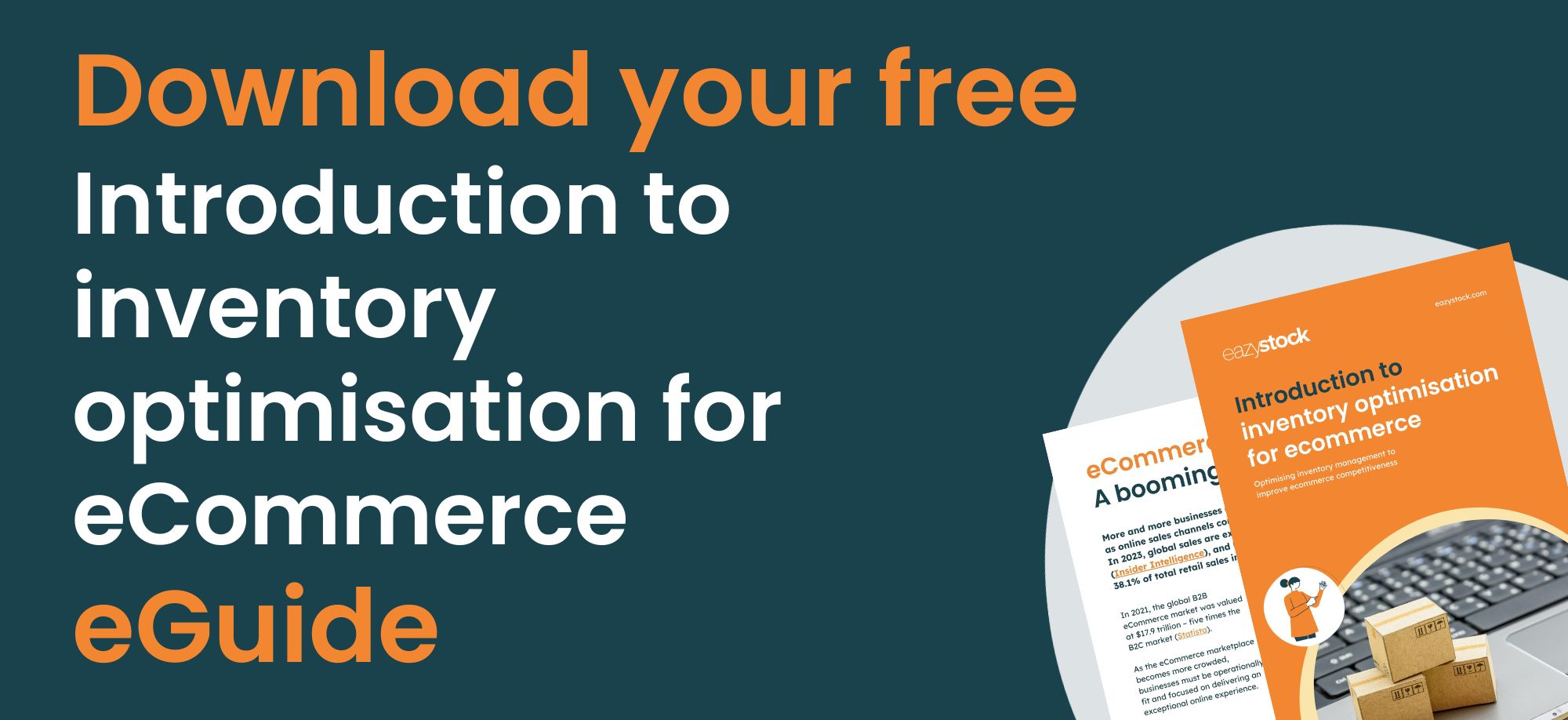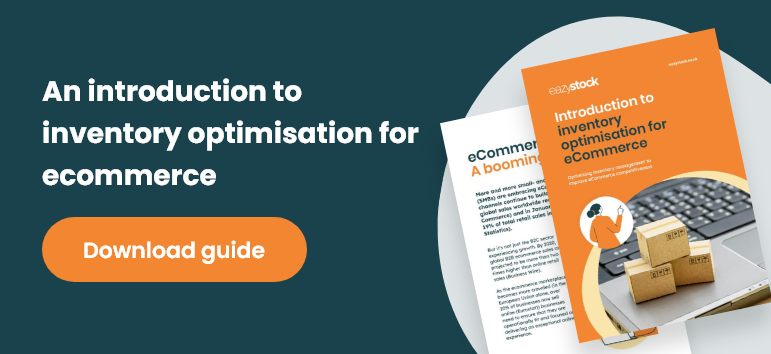Improving multi-channel eCommerce inventory management
What is multi-channel ecommerce inventory management?
Businesses who have multiple sales channels, including on and offline, require multi-channel ecommerce inventory management. This includes keeping track of stock orders and items at every stage of the supply chain, and making sure they move from manufacturer through to the final customer as efficiently as possible.
As customers demand consistently high levels of service, regardless of the sales channel, businesses need to review their multi-channel inventory management processes to ensure they can deliver a seamless experience – whether in-store, online or via a marketplace or reseller. Here are some top tips on how to achieve this.
Sharpen-up multi-channel demand forecasting
Optimised inventory management processes are critical for ecommerce businesses to ensure product availability and keep customers happy.
To ensure fulfilment rates are maximised you need to carry the right amount of the right stock items to meet customer demand. And this requires accurate demand forecasting.
When you’re selling across multiple sales channels, including ecommerce, this can become a much more complex task.
For starters you need to track demand for each product across a range of channels and aggregate this to ensure cost-effective reordering from suppliers.
Then there’s the issues of price sensitivity. The minute you or your competitors raise or lower your prices this can affect demand. If your forecasting and reordering rules are not adjusted quickly, you could find yourself over or under stocked.
With a product portfolio of hundreds or thousands of items it’s impossible to keep on top of this manually.
Smart inventory management teams therefore enrol the help of technology. Demand forecasting software can dynamically adjust forecasts based on an item’s demand patterns, seasonality, trends and promotions. It will then update reordering parameters accordingly to match demand.
Review your supply chain agility
In order to remain competitive, omni-channel businesses like eCommerce need super efficient supply chain operations. With increased supply chain disruption since the coronavirus pandemic, there’s a fine line between having a lean supply chain and one that’s resilient to demand and supply volatility.
Many businesses are reviewing their supplier network and diversifying away from one supplier to mitigate the risk associated with a single source of supply. Others are finding suppliers closer to home, to reduce transportation costs.
Businesses in industries where raw materials or stock availability is challenging are increasing the amount of inventory they hold to prevent stockouts. ‘Just in case‘ stocking policies will tie-up more money in goods sat on shelves, but it could pay off in the long run if you have better product availability than your competitors.
Whatever supply chain resilience strategy you chose, make sure you do a cost/benefit analysis to review the consequences on your bottom line first.
Invest in your ecommerce website
It’s not just B2C ecommerce retailers investing in building intuitive user interfaces and designing the best online shopping websites – B2B companies are also taking ecommerce very seriously. 80% of B2B companies are making their online channels as good or better than their offline channels.
But there’s still a long way to go with 52% of businesses who purchase online saying they often get frustrated.
This means there’s a great opportunity to make your multi-channel ecommerce experience as good as possible.
To attract and keep customers you need a user-friendly website that’s logical to navigate, simple for finding products and offers easy and secure payment functionality – or face abandoned baskets and lost sales.
Focus on multi-channel order fulfilment
A key objective of multi-channel inventory management is to process orders quickly, efficiently, and correctly. Customers are demanding fast and free deliveries. A recent US study found that 48% of shopping carts were abandoned to due extra costs, such as shipping, whilst 22% left due to slow delivery times.
It’s therefore critical to have a real-time overview of your stock situation. Cancelled customer orders, returns or reservations also need to update real time inventory levels. For such accuracy, you require automation.
Ecommerce software will keep on top of online orders, some will manage omni-channel sales.
A warehouse management system (WMS) or enterprise resource planning (ERP) system can provide accurate and transparent inventory control, including tracking inventory, raising purchase orders and managing dispatch.
And an inventory optimisation tool will ensure you always carry to right levels of stock to fulfil demand, without overstocking.
Optimise supplier management
Optimising your supplier ordering processes is crucial – particularly if you have a global supplier network on long lead times.
When orders are on long lead times or stock items are in short supply across the market, rush orders are simply not logistically possible.
In addition, with shipping and freight costs so high, you want to ensure your orders exactly reflect demand forecasts e.g no one wants to pay to ship half-full containers, or items that are not needed, it’s simply uneconomical.
Finally, suppliers like to plan their manufacturing and fulfilment schedules. Therefore if you can provide accurate mid to long term order schedules you are more likely to receive accurate and punctual deliveries and be in a position to negotiate the best deal.
An inventory optimisation tool is best suited to help with order management. It will connect to your existing stock ordering system and allow you to:
- Automatically create orders for the right amount of items to meet future demand, considering current stock, safety stock and your chosen service levels
- Take into consideration supplier lead times and supplier delivery calendars. For example, if you only place orders from a certain supplier once a week, the system will adapt the order quantities accordingly.
- Suggest your optimum order quantities, considering MOQs and future demand.
- Calculate the most economical way to fill a container, by identifying the items that are most cost-effective to add to the order.
Use software to succeed with multi-channel ecommerce inventory management
Keeping these best practices in mind from the start will set you on the path to success, but they can only truly be implemented by relying on modern software solutions for support. At EazyStock we focus on providing market-leading inventory optimisation software. Contact us today to chat with our team about how we can help.
Want to know more about inventory optimisation for ecommerce businesses? Download our latest eGuide below:
First published on 01 December 2017, updated April 2021.










